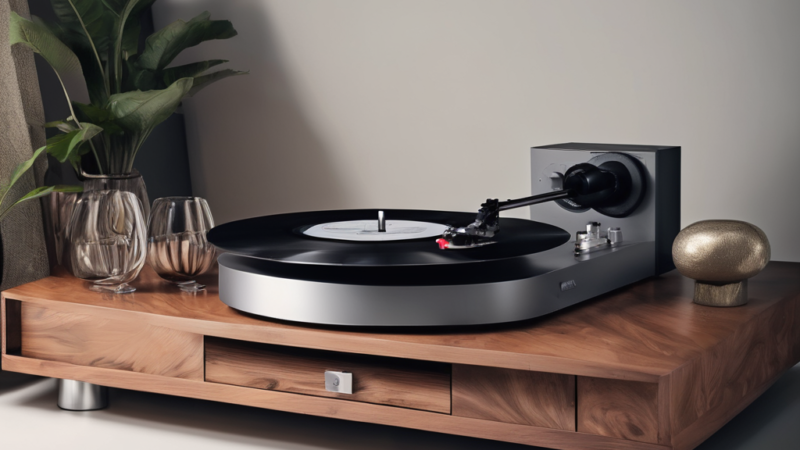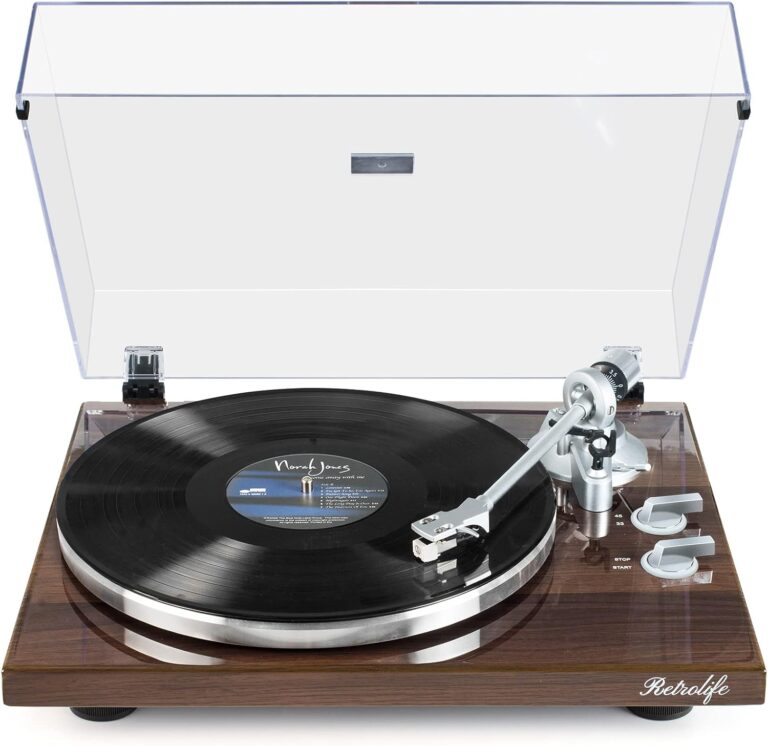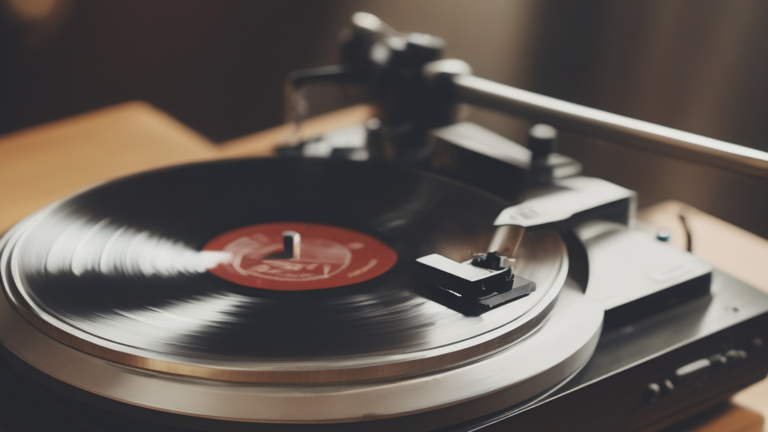Do You Need a Receiver for a Turntable?
A receiver is an important piece of equipment in a turntable setup, as it amplifies the audio signal from the turntable and sends it to the speakers. Without a receiver, the audio from the turntable would be too quiet to listen to, and the sound quality would suffer.
However, one question that often arises is: do you need a receiver for a turntable? In this article, we will explore whether a receiver is truly necessary for a turntable, and what other options are available.

Understanding Turntables and Receivers
To get your sound setup just right, you’ll need to understand the difference between the two audio components. A turntable is a device used to play vinyl records. It typically consists of a platter, a tonearm, and a cartridge. To get the audio signal from the recorder to the speakers, you’ll need a receiver or an amplifier.
Receivers are a combination of an amplifier and a preamp. The preamp takes a low-level signal from the turntable and increases it before sending it to the amplifier which then sends it to the speakers. You can also find integrated amplifiers which combine the amplifier and preamp into one unit. Powered speakers come with their own built-in amplifier and don’t require a receiver.
For audiophiles, vintage receivers are preferred for their superior audio quality. However, modern audio equipment can be just as good, if not better.
When Do You Need a Receiver for Your Turntable?
Receivers provide several benefits to your audio system. First, they act as an amplifier, allowing you to control the volume of your music. Additionally, they help to improve the audio quality of whatever you’re playing.
Most receivers come with a phono input, which is necessary for a turntable. The phono input helps to adjust the impedance, RMS power, and clipping levels, all of which impact sound quality.
If you don’t already have a receiver, you may be able to get away with a preamp or integrated amplifier. The main difference between these and a receiver is that they don’t come with speaker drivers. This means you’ll need to invest in additional audio components, such as powered speakers.
Alternatives to Using a Receiver
Now that you know when you do need a receiver for your turntable, it’s time to look at alternatives. Thankfully, there are a few ways to get around the need for a receiver depending on your audio setup. From integrated amplifiers and preamps to turntables with built-in preamps, you’ll find plenty of options to choose from when it comes to improving your vinyl listening experience.
Integrated amplifiers and preamps are great alternatives for those who are looking for a simpler, more streamlined solution. These components are designed to amplify and shape the sound of your turntable without the need for a separate receiver. They are usually much smaller than a receiver, making them ideal for those with limited space.
Another great option is the rise of turntables that feature built-in preamps. This means that all you need to do is plug the turntable into a powered speaker and you’re ready to listen. These turntables make it easy to get great sound quality without any extra components.
Choosing the Right Setup for Your Needs
Now that you understand the alternatives to using a receiver, it’s time to understand how to choose the right setup for your needs. The right choice for you depends on your budget and the type of audio system you’re looking to build. It is important to assess your audio system requirements and match the turntable and receiver specifications.
When selecting components, power, and impedance should be taken into consideration. The RMS power rating of the receiver indicates the maximum power it can deliver, while the speaker driver and clipping are related to the impedance. Also, make sure that the receiver has a phono input if you want to connect a turntable.
If you’re looking for high-end audio quality, you may want to invest in a preamp and an amplifier or an integrated amplifier. Alternatively, you can opt for powered speakers.
Installation and Setup
Setting up a turntable with a receiver can be a straightforward process, but it is important to follow the instructions carefully and pay attention to details to ensure the best sound quality. To get started, follow these steps:
- Position the turntable and receiver close together, making sure there is a level surface to place both devices on.
- Connect the turntable to the receiver with a phono-to-stereo cable, making sure that the red and white connectors are plugged into the correct ports on the receiver.
- Connect the receiver to a power source, then switch it on.
- Use the receiver’s volume control to set the desired volume level.
- Place the record on the turntable and adjust the tonearm so that the needle rests at the beginning of the record.
- Use the turntable’s speed control to select the correct record speed (33rpm for 12-inch records and 45rpm for 7-inch records).
- Press the start button on the turntable to begin playing the record.
To ensure your turntable and receiver are working properly, here are some common mistakes to avoid:
- Make sure the phono-to-stereo cable is firmly connected at both ends.
- Be sure to use the correct type of cable and connectors for your turntable and receiver.
- Use the correct power source and power cord.
- Check the tonearm and needle to make sure they are in good condition and properly calibrated.
- Make sure the record is placed correctly on the turntable and the speed is set correctly.
Following these steps and avoiding the mistakes above will help you get the most out of your turntable and receiver, ensuring optimum sound quality.
FAQs
Do all turntables require a receiver?
No, not all turntables require a receiver. Many turntables come with built-in pre-amps that allow them to be plugged directly into an amplifier or sound system without the need for a separate receiver.
Can you use powered speakers with a turntable?
The answer is yes, powered speakers can be a great addition to a turntable setup, as they make it easier to connect your audio components. The main factor to consider is the impedance of the powered speakers.
For example, if the powered speakers have a lower impedance than what is recommended for your turntable, it can lead to severe sound clipping. Also, be sure to check the RMS power of the powered speakers against the speaker driver of your turntable.
What is the difference between a receiver and an amplifier?
A receiver is an all-in-one device that allows you to control multiple audio components at once, and it is usually used to connect a turntable to a speaker. It takes an audio signal from a turntable, then amplifies it and sends it to the speaker. In addition, it provides features like an FM or AM tuner, preamp, and digital audio inputs.
Conclusion
In conclusion, understanding whether you need a receiver for your turntable depends on your audio setup and your audio goals. If you’re looking to get great sound quality from your vinyl collection, then a receiver may be the perfect fit.
However, if you’re just looking for a basic setup, there are other audio components you can use that may be more suitable. You’ll need to consider your budget, the space, and your listening preferences to determine the best setup for your needs.
Ultimately, you can create an amazing audio system with the right equipment, so be sure to do your research and get expert advice before making any decisions.
Our Mission: At AudioInspects, we are dedicated to providing the most comprehensive and authentic reviews of audio equipment on the market. We conduct independent testing and research of products, so you can make an informed decision before making a purchase. Our mission is to help you find the best audio equipment to improve your listening experience. So trust us to deliver the most reliable recommendations and advice.
Disclosure: When you do decide to make a purchase through our links, please note that we may earn a commission, but this does not affect the honesty of our reviews. You can read our affiliate disclosure in our Disclosure.






